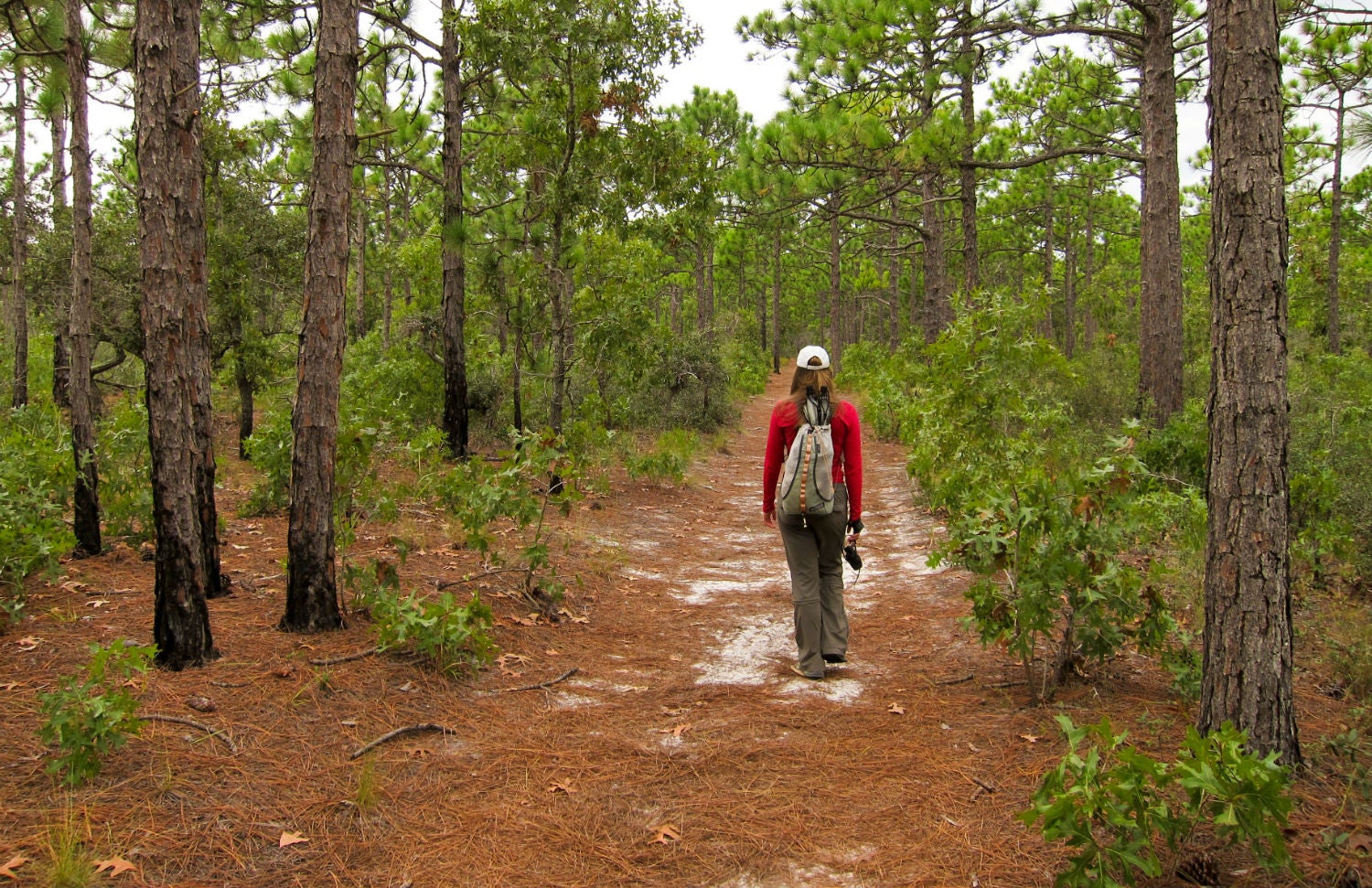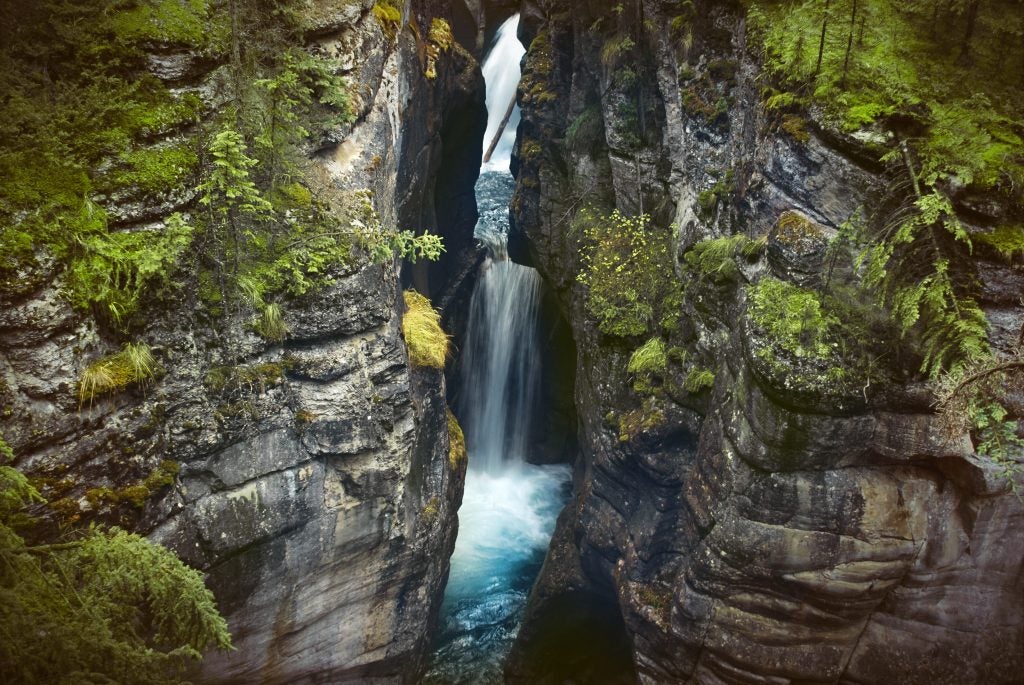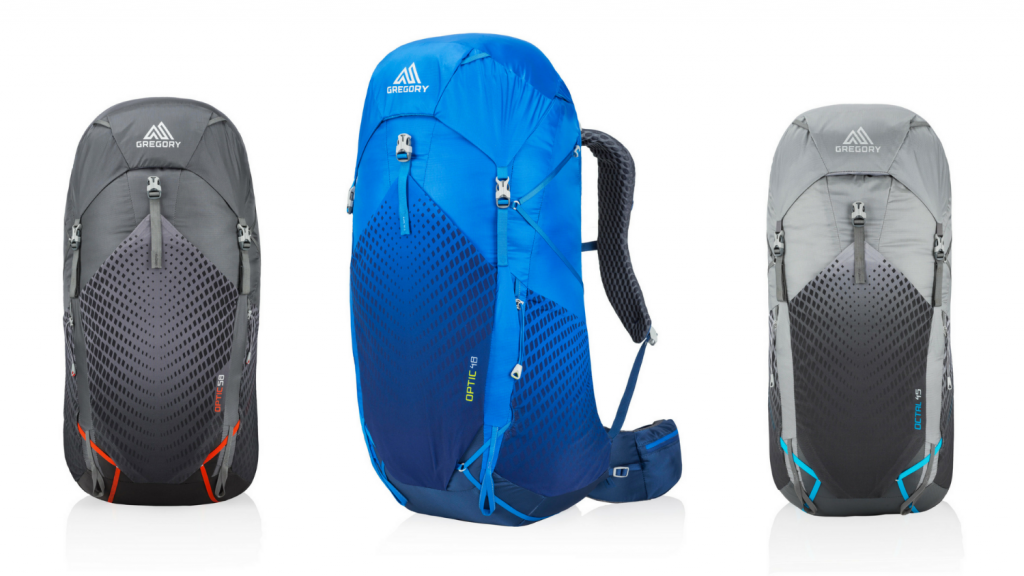The Dyrt campers offer tips on camping at Carolina Beach State Park in North Carolina.
Carolina Beach State Park is located on the inlet bordering Cape Fear River, and is just a short drive to some of North Carolina’s best beaches. Around the campground, you’ll find a variety of hiking trails that weave through pine and oak forests laden with Venus Flytraps, a carnivorous plant that feasts on insects. You can look out for brown pelicans, ospreys, finches, woodpeckers, and other birds. Animals like white tailed deer, foxes, raccoons, squirrels, river otters, and alligators also call this region home. Spend the day hiking, fishing, kayaking, four-wheel driving, and watching the sunset over the nearby marina.
You can choose to stay in an unplugged campsite set between trees or opt for a fully-powered cabin. The campground is wheelchair accessible and pet-friendly. If you’re looking for a relaxing atmosphere where you can experience the best of North Carolina’s diverse landscapes – from wetlands to forests to beaches– then Carolina Beach State Park is an obvious choice.
Carolina Beach State Park in North Carolina
The Dyrt campers have provided lots of feedback on camping at Carolina Beach State Park. We’ve collected their most helpful advice below to help you make the most of your North Carolina camping trip.
1. Arrive Early
Carolina Beach State Park is a popular spot and can get crowded — especially in the high season. There are multiple types of campsites. You can pitch a tent on a powered or unpowered campsite, stay in a cabin that sleeps six, or book a group campsite that can accommodate up to 26 people. Arrive early to choose the best spot for your camping style or book your campsite in advance. The central camping spots are more shaded, less private and closer to the campground amenities than the campsites on the outer edge of the campground.
“Our main issue is the gate being closed at 10pm. It once looked like we were going to be late, with our small baby. We called to let the staff know, and were told that if we arrived late we would have to walk from the main gate with our camping gear and baby. Fortunately we made it with a minute to spare.” – The Dyrt Camper I R.
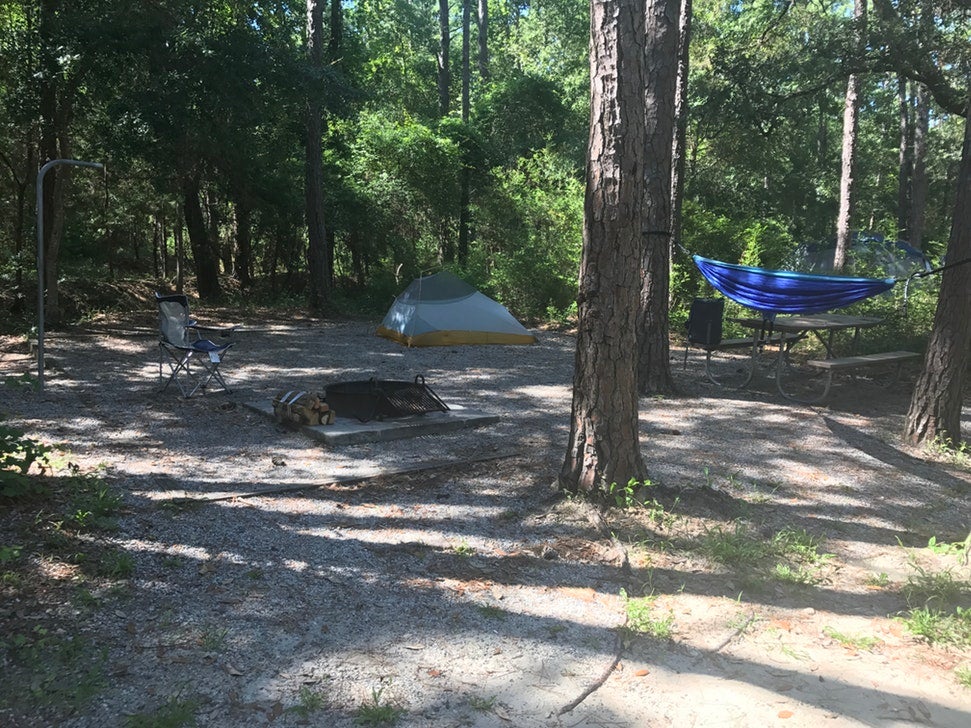
Image from The Dyrt Camper Frankie M.
2. Bring Bug Spray and Mosquito-Repellent Clothing
Campers aren’t the only ones who love staying at Carolina Beach State Park. Thanks to the surrounding wetlands, many types of bugs and mosquitoes call the campground home. Bring bug spray, or wear mosquito-repellent clothing — especially at dawn and dusk, when the bugs tend to be most active.
“Definitely bring the bug spray.” — The Dyrt Camper Faye D.
3. Watch Out for Raccoons
Keep all of your food packed away in a tight container or locked inside of your car. Mischievous raccoons roam the campground and have little fear of humans. It’s almost impressive how clever they can be when it comes to getting their paws on your snacks.
“Be aware of the raccoons! They will get close to you at nighttime.” — The Dyrt Camper Jade P.
4. Visit During the Off-Season
The off-season is an ideal time to visit Carolina Beach State Campground. You’ll be able to enjoy the beach and the hiking trails without sharing it with others. The air tends to be less humid, there are almost no bugs, and the beach is just as beautiful.
“Love camping here in the late fall (November). It’s not crowded, there’s no bugs. The campsites are pleasant.” — The Dyrt Camper Holly L.
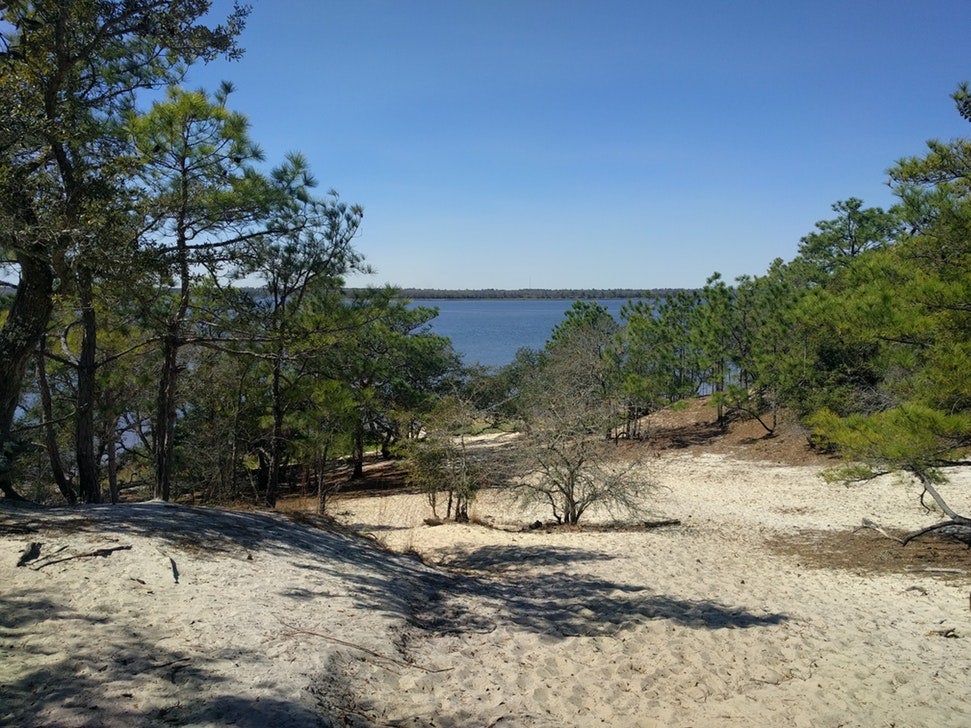
Image from The Dyrt camper Daniel F.
5. Venture to the Nearby Beaches To Swim
Campers are not allowed to swim at Carolina Beach State Park’s beaches or rivers because of dangerous currents. Instead, you’ll have to drive to the beaches located just outside of the park, where the swimming conditions are much safer.
6. Go to the Marina for Sunset
The marina is the best place to pack a picnic and watch the sunset. Since most campers will stick to the campground and start building their campfires around this time, you’re might get lucky and have the marina all to yourself.
“I would recommend walking by the marina around sunset for cool views of the water with the sun setting in the west.” The Dyrt Camper Daniel P.
7. Pack your Hiking Shoes
There are miles of hiking trails that connect Carolina Beach State Park from the beach to the forest populated with longleaf pine and oak trees. All marked trails in the park are rated as “easy” and the Fitness Trail is wheelchair accessible. If you want to see one of the only carnivorous plants in the world, venture out on the Flytrap Trail, where you can see Venus Flytraps growing in the pocosin wetlands. Every few weeks, there are carnivorous plant hikes hosted by the park rangers who can tell you more about the native species and how Venus Flytraps catch their prey.
“The trails were gorgeous; winding through other-worldly landscapes, containing carnivorous plants… I saw an amazing Pitcher plant while I was there. The landscape is very unique and there are miles of trails throughout.” — The Dyrt Camper Faye D.
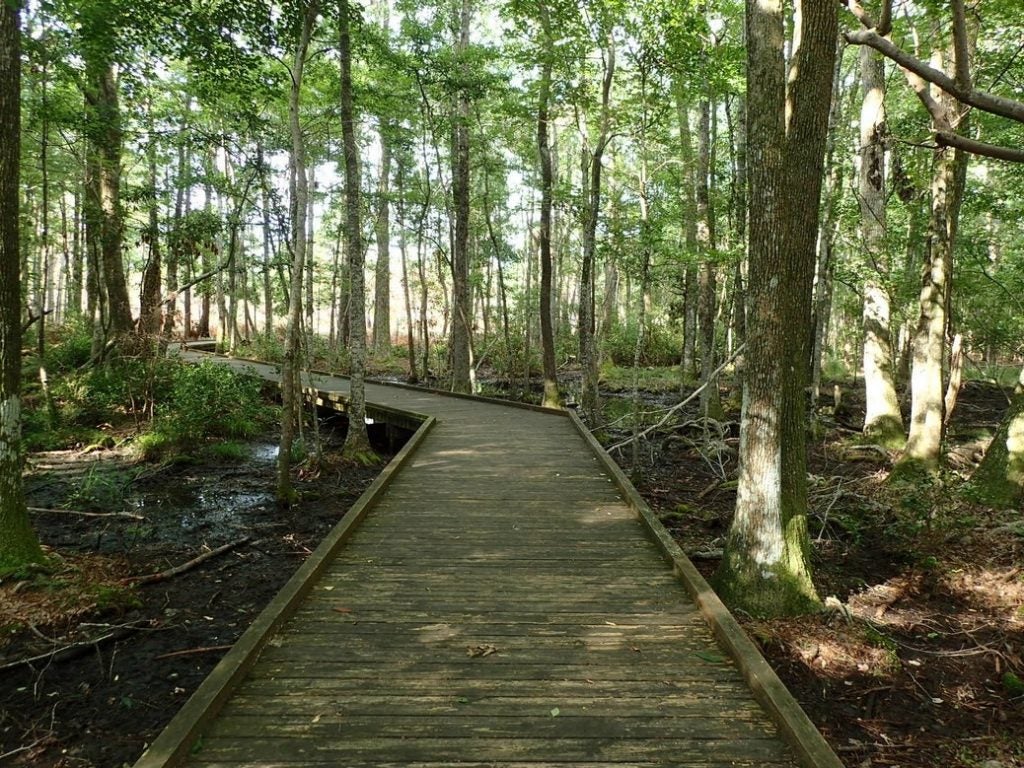
Image from The Dyrt Camper Stephanie B.
8. Don’t Forget Fido!
Dogs are allowed at Carolina State Beach campsites but are not allowed in the cabins. They’ll love wandering through the many trails, running along the beach, and sniffing around the woods.
“Had a great time camping and hiking around with my dog, Jinx. It was his first camping trip he seems to like it here as much as I did.” — The Dyrt Camper Jade P.
9. Visit with a 4WD
Carolina Beach State Park campground is accessible to all types of vehicles. However, if you want to drive along the beach, you’ll need a 4WD. Driving along the beach is a great way to discover a secluded spot away from the crowds of the campground.
“You can drive out on the beach for the day and it is never crowded.” The Dyrt Camper Heather T.
The Dyrt is the only camping app with all of the public and private campgrounds, RV parks, and free camping locations in the United States. Download now for iOS and Android.Popular Articles:
Articles on The Dyrt Magazine may contain links to affiliate websites. The Dyrt receives an affiliate commission for any purchases made by using such links at no additional cost to you the consumer.

